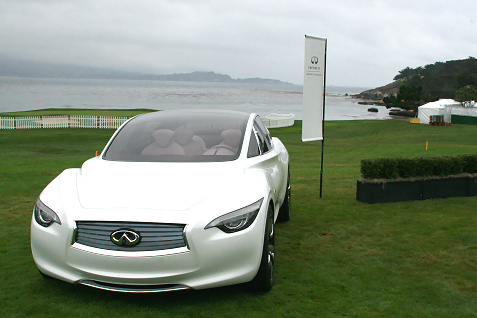You can tell a lot about the past if you look at the styling of the objects made. The styling of American automobiles is a good example. Automobile designs reflect the mode and culture of the different eras they were designed in. For example, the rounded bodies of 1940s cars were a deliberate rejection of the antiquated angular designs of the 1930s cars; the elevated tail fins of the 1950s cars reflected America’s fascination with aircraft and space travel; and the beefy muscle cars of the 1960s illustrated the passion that car buyers were developing for raw performance. With help from Hoffman Automotive of Hagerstown, a local Chrysler, Dodge, Jeep, Ram dealer in Hagerstown, MD, we survey a few interesting examples of cars that really represent the feelings of the times.
1948 Tucker – In the 1930s, cars were becoming faster and more powerful, and this led to more people were being hurt and killed in car accidents. Detroit’s car makers did little to make their vehicles safer because, frankly, there weren’t federal regulations and car buyers weren’t demanding it. Then in the early ’40s, a forward-thinking automotive designer named Preston Tucker decided that he could build “a safer car” and had a hunch that it was what car buyers wanted.
In 1945, Tucker founded Tucker Motors to make his safety cars. The first step was to secure funding, and he used some rather creative techniques to do so. For example, he sold dealerships to those who wanted to carry the Tucker line, and it came with promises of tremendous profits. After monitoring this interesting sales technique for a while, the Securities and Exchange Commission (SEC) jumped in and shut Tucker down in 1948. The result was that Tucker built just 51 cars before the company went silent.




